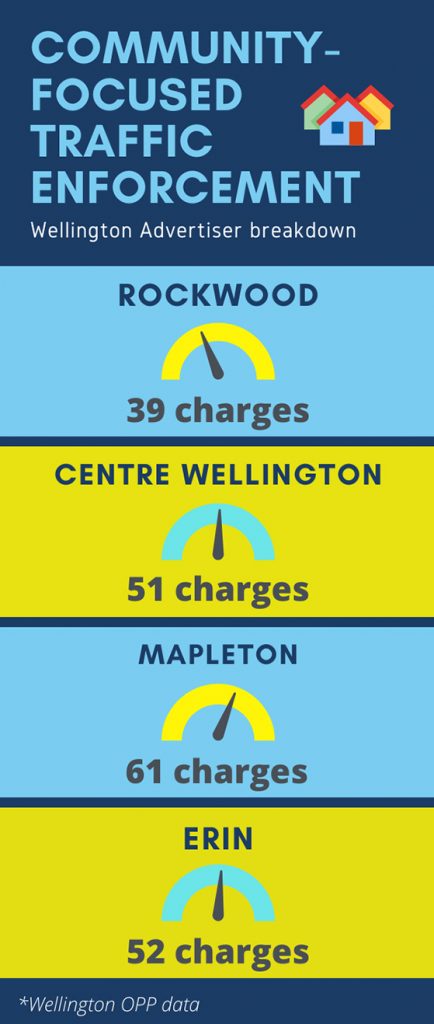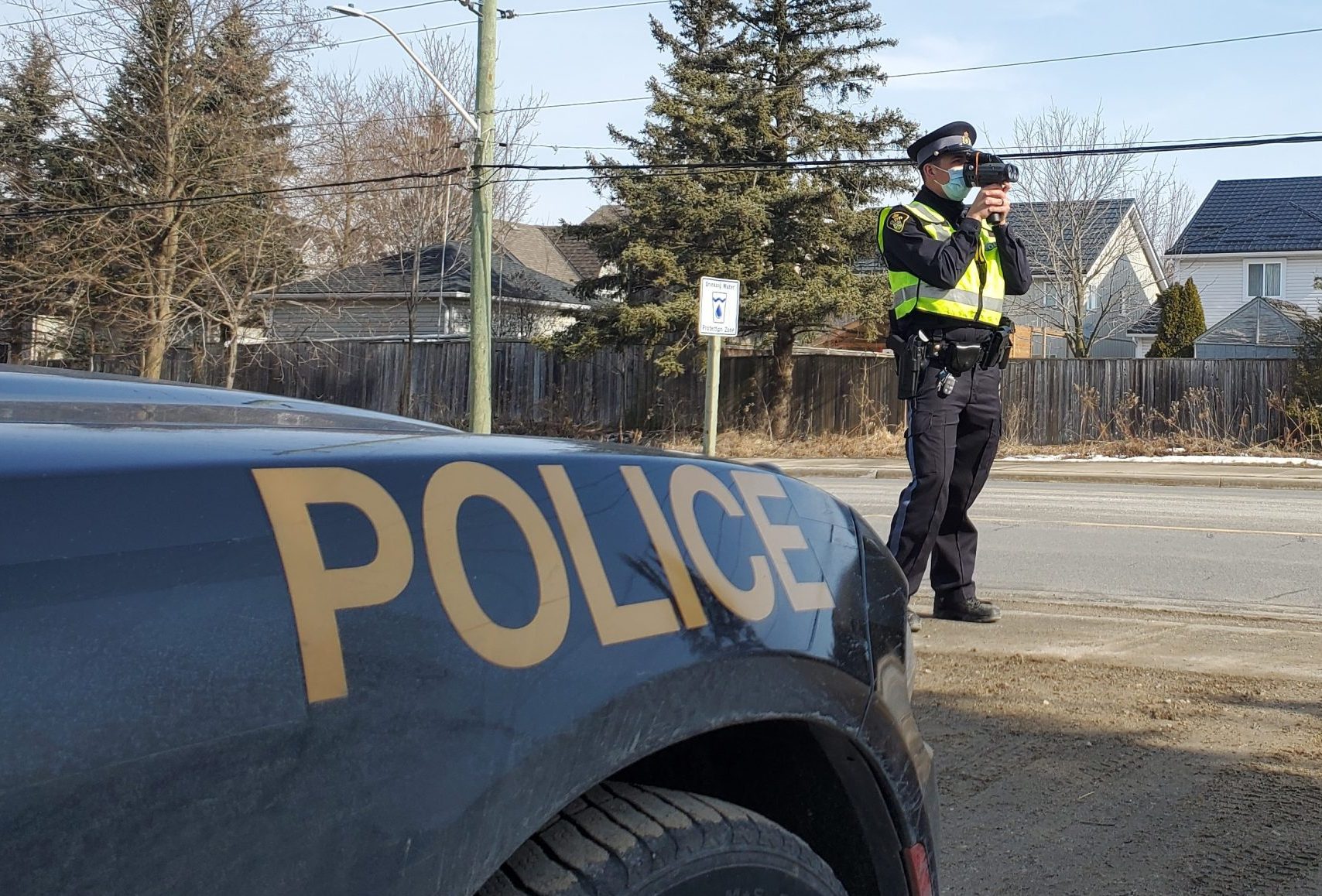WELLINGTON COUNTY – On a Wednesday each month, the Wellington OPP traffic management unit (TMU) blitzes a community, based on concerns called in, reports over social media or feedback from municipal councillors along with data collected from “Blackcat” radars.
“It just focuses our resources specifically on one community so we can address their concerns,” TMU Sergeant Darryl Porterfield explained.
Starting in March, the unit has run community enforcement blitzes in Rockwood, Centre Wellington, Mapleton and Erin, resulting in 203 charges ranging from speeding to insecure loads.
Under the radar in July will be a Centre Wellington community, for the second time.
Centre Wellington Mayor Kelly Linton said his community is no different from any other and is “seeing a good amount of speeding and aggressive driving complains across the board.”
Linton appreciates the blitzes, saying, “for a day or a couple days when they do it, it reminds people we do have speed limits and rules of the road.”
As mayor, Linton said he hasn’t had any input on the OPP’s decision for another round in Centre Wellington.
“The OPP do what they do based on their evidence and what they’re seeing based on their patrols and complaints that are coming in,” he said.
Linton added politicians across the county have been encouraged to spread the word of a “1-800 number” for residents to call in complaints “so that they can start to do a better job of tracking.”
Upwards of seven officers in marked and unmarked vehicles with stationary and moving front- and backward-facing radar, focus on nabbing drivers for the OPP’s “big four” offences: speeding, aggressive and distracted driving, impaired driving, and not using seatbelts.
“We’re finding there’s a significant portion of those types of offences that are playing a role in our fatal collisions,” Porterfield said.
But the blitzes are only a short-term solution.
“You start to get that creep effect back and people start returning to some of their regular driving behaviours,” he said.
“That’s part of the reason we like to engage some of our municipal government partners to look at some alternative measures, some more long-term solutions.”

This image shows the number of charges laid by the OPP during 2021 safety blitzes in Wellington County.
Porterfield noted some options include community radar signs and traffic calming measures.
As Wellington County undergoes its Road Master Action Plan study, measures like those suggested by Porterfield are proposed under speed management guidelines which have been batted around over the past several months by the county’s roads committee.
Roads committee chair Andy Lennox said the county wants objective criteria outlining when and where it’s appropriate to use speed-limiting design features and tactics.
Increasing fines through legislated community safety zones, giving a narrower feel to streets with curbs/gutters, crosswalks, electronic speed signs and automated speed enforcement cameras are some options being considered.
“There was some extensive discussion and some follow up discussion in May, with the attempt that in the fall, as we get closer to completing the Roads Master Plan, speed management guidelines will be finalized and approved and will become part of that finished master plan process,” Lennox explained.
“From my perspective, people do tend to drive according to the road … think about country roads, one that’s tree lined, you’ll tend to drive slower than one that’s not, so, the perception that people have of the roadway and how comfortable they feel does have a play a big role,” he said.
Lennox added it becomes a “tricky balance” between managing traffic flow and altering roads.
Police are also focusing efforts on the county’s larger roads where traffic volumes are able to increase along with high speeds – a potentially deadly combo.
“At the end of the day, that’s where we’re experiencing our fatal collisions,” Porterfield said.
Hotspot areas officers are currently focusing on include: Wellington Road 124 between Guelph and Erin, Wellington Road 21 from Elora to the border with Waterloo Region, and Highway 6 between Arthur and Mount Forest.




